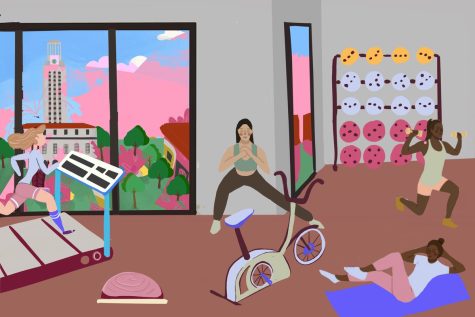Students, here’s how you can live sustainably
November 28, 2022
As students trek down Speedway, a welcoming autumn aura permeates through campus. On beautiful days, students can experience pleasant greenery, birds’gleeful chirps and just the right amount of sunshine.
Much of the time, I take our campus for granted. You may as well.
Students are consistently reminded of their environmental footprint. It’s promising to work, study and live on a campus where a vision of environmentalism and sustainable living prevails. Sustainable habits, practices and issues can be nuanced from the protests of the boa feather litter after Harry Styles’ concert to calls for a “Green Halloween.”
In order to preserve and uplift recent University sustainability efforts, students and faculty must do their part. As such, students should be informed about and practice sustainable habits to promote environmentalism at UT.
The University of Texas’s Office of Sustainability, created in 2009, is central to student involvement in environmentalism. They’ve released a student guide to sustainable living, focused on individual, implementable and eco-friendly habits. The guide, created by students, outlines ways to live more sustainably — from dining practices to energy use in dorms.
Students become involved in environmentalism in many ways. For environmental science junior Mandy Tran, her interests stem from her interest in science and its intersection with social advocacy.
“What got me into environmentalism, specifically, was my interest in biology and ecology,” Tran said. “It was a very clear way for me to tie in (other) things I’m interested in, such as my career and social activism.”
Other students are committed to environmentalism through their personal experiences.
“(For me) … it’s my connection to those in Vietnam and how climate impacts people on some islands through rising sea levels. It’s a countless topic impacting those on all scales,” public relations junior Vivian Nguyen said.
Students can implement a variety of sustainable habits and practices to contribute to campus environmentalism. For instance, students can use reusable silverware, practice second-hand shopping, limit food waste, use public transportation and make conscious volunteering efforts in natural spaces.
There is also an abundance of student-led organizations on environmentalism that students can join. From the Campus Environmental Center and Environmental Justice Collective to the Austin Conservation Project, students can become involved in a variety of focuses — especially if it relates to their career or aligns with personal interests.
While strides have been made in campus sustainability, there still remains student concerns.
“A lot of people feel kind of disillusioned with the status quo of sustainability, with environmentalism, … since we are a college that is very heavily funded by oil and gas money,” Tran said.
It’s no surprise that Texas harbors a cozy relationship with big oil. While President Jay Hartzell has said that he doesn’t call the shots in fossil fuel divestment, the underlying University of Texas System profits $6 million each day through oil fields. For now, it’s clear that natural gas and oil will remain dominant obstacles in the pursuit of a truly sustainable future.
Even so, sustainable living on campus is possible. A vision of a green future is possible.
Throughout your time here on campus, your decisions on conservation and sustainable living have an exponential impact. We are on a beautiful campus, with access to an abundance of nature and trails in close proximity. Let’s keep it that way.
My message to students and faculty: Do your part in supporting a sustainable campus.
Wan is an aerospace engineering and Plan II freshman from Houston, Texas.











